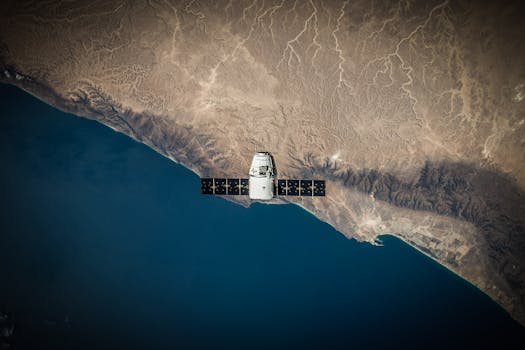
MEO Satellites: Revolutionizing Global Connectivity with Medium Earth Orbit Technology
MEO satellites, or Medium Earth Orbit satellites, are a type of satellite that operates at an altitude of around 2,000 to 36,000 kilometers above the Earth’s surface. This orbit is higher than Low Earth Orbit (LEO) satellites but lower than Geostationary Orbit (GEO) satellites. MEO satellites are becoming increasingly popular due to their unique benefits and applications, which are transforming the way we communicate and access data globally.
MEO satellites offer several advantages over other types of satellites. One of the primary benefits is their ability to provide global coverage with a smaller number of satellites. Because MEO satellites are in a higher orbit than LEO satellites, they can cover a larger area of the Earth’s surface, reducing the number of satellites needed to provide global coverage. This makes MEO satellites a more cost-effective option for many applications.
Applications of MEO Satellites
MEO satellites have a wide range of applications, including navigation, communication, and Earth observation. One of the most well-known applications of MEO satellites is the Global Positioning System (GPS), which uses a constellation of MEO satellites to provide location information and timing signals to GPS receivers on the ground. Other applications of MEO satellites include satellite communication systems, such as the O3b (Other 3 Billion) network, which provides high-speed internet connectivity to remote and underserved communities.
MEO satellites are also used for Earth observation, providing valuable data on weather patterns, climate change, and natural resources. For example, the European Space Agency’s (ESA) Swarm mission uses a constellation of MEO satellites to study the Earth’s magnetic field and its interactions with the solar wind.
Benefits of MEO Satellites
MEO satellites offer several benefits over other types of satellites. One of the primary benefits is their ability to provide high-speed data transfer rates. Because MEO satellites are in a higher orbit than LEO satellites, they can provide more consistent and reliable connectivity, making them ideal for applications that require high-speed data transfer, such as video streaming and online gaming.
MEO satellites also offer lower latency compared to GEO satellites. Because MEO satellites are closer to the Earth’s surface than GEO satellites, they can provide faster signal transmission times, making them ideal for applications that require real-time communication, such as voice over internet protocol (VoIP) and video conferencing.
Challenges and Future Developments
Despite the benefits of MEO satellites, there are several challenges that need to be addressed. One of the primary challenges is the high cost of launching MEO satellites into orbit. However, advances in launch technology and the development of reusable launch vehicles are helping to reduce the cost of access to space.
Another challenge facing MEO satellites is the risk of interference from other satellites and terrestrial systems. As the number of satellites in orbit increases, so does the risk of interference, which can impact the performance and reliability of MEO satellite systems. To address this challenge, satellite operators and manufacturers are developing new technologies and techniques to mitigate interference and ensure the reliable operation of MEO satellites.
In conclusion, MEO satellites are revolutionizing global connectivity with their unique benefits and applications. As the demand for high-speed data transfer and low-latency communication continues to grow, the importance of MEO satellites will only continue to increase. With ongoing advances in technology and the development of new applications, MEO satellites will play an increasingly important role in shaping the future of global communication and connectivity.



